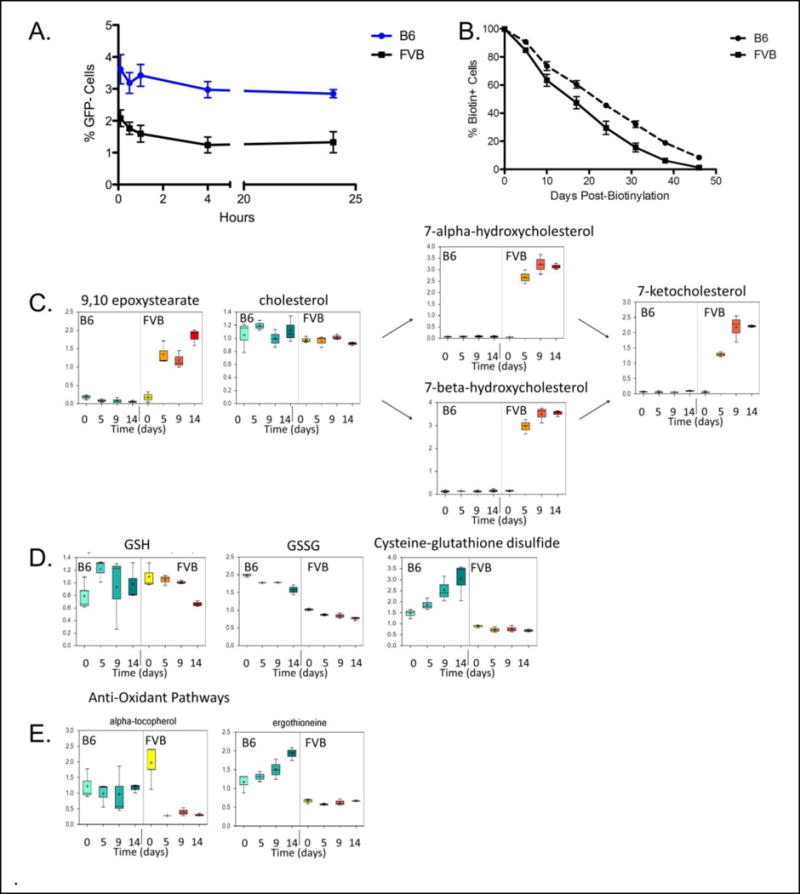Figure 1.

Post-Transfusion Recovery of Stored Murine RBC units, Endogenous RBC Lifespan, and Metabolomic Analysis of Markers of Oxidative Stress During RBC storage. Murine RBCs were collected and stored (as described in Methods) for 14 days, and then transfused into H2-Kb GFP mice that express transgenic GFP on all hematopoietic cells, including RBCs. (Panel A) Peripheral blood of recipient mice was sampled at indicated times post-transfusion and recovery of transfused, stored RBCs was determined by flow cytometric enumeration of GFP-negative RBCs. (Panel B) B6 or FVB mice underwent biotinylation in vivo until 100% of their RBCs were avidin reactive. Peripheral blood samples were then stained with avidin-APC at the indicated time points and the percentage of avidin-reactive RBCs was enumerated, which allowed a determination of endogenous RBC lifespan. (Panels C–E) Aliquots of stored RBC units obtained from FVB and B6 mouse donors were frozen at the indicated time points and were then analyzed by GC/MS and LC/MS/MS, as appropriate (as described in Methods). Results are reported for products of lipid peroxidation (C), for glutathione pathway components (D), and for two natural anti-oxidants (E). These metabolomic data represent the combined results from 3 separate experiments; in each experiment, post-transfusion recovery was determined at Day 14 of storage, with similar results to those in Panel A in each case.
